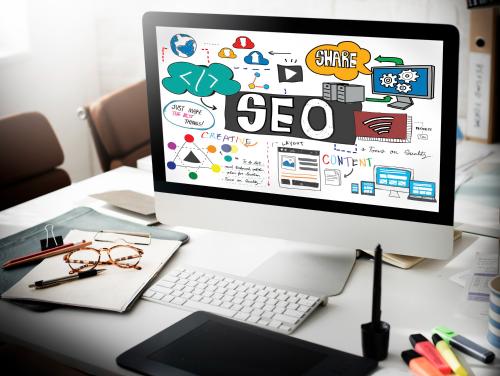Are Unoptimized Images Failing Your Website?

Where attention spans are shorter than ever, website performance can make or break your online presence. We've all been there eagerly clicking on a link, only to be greeted by a slow-loading webpage that feels like it's stuck in the dial-up era. One of the major culprits behind these frustrating experiences? Unoptimized images.
You might be wondering, what's the big deal when images are unoptimized? The image on your website is just pictures, right? Well, the answer to this image-related question on your website is both yes and no. Images break up the boorishness of texts. At the same time, you can deliver your brand message to users through images. However, these seemingly innocent images can become the Achilles' heel of your website if not handled properly.
The need for speed in the online arena
Let's talk about the need for speed in the online arena. Visitors are more likely to hit that back button when your website loads at the pace of a sloth. Remember the days when you'd watch pixels slowly load and form an image line by line? Yeah, those days are long gone, and users have grown accustomed to instant gratification.
Unoptimized images are like heavy baggage that your website has to carry. Large image files use lots of bandwidth. As a result, these image files increase the loading time. So, that gorgeous high-resolution image might look stunning, but if it's causing your website to crawl along, it's time to reconsider. With the help of the Best SEO Company in India, you can optimize large image files.
The Balancing Act: Quality of the image vs. Size of the image
Now, before you go on deleting every image, let's talk about finding the right balance between image quality and file size. It's a bit of a tightrope act for website owners. On one hand, you want the images on the website to capture the essence of your content. On the other hand, you need them to be light enough to load swiftly.
This is where image optimization comes into play. Image optimization compresses images without distorting their quality that much. There are various tools and techniques available to strike that balance between the quality vs size of the image. You can use online image compressors that squash down unnecessary data, or if you're tech-savvy, you can tinker with image formats, like converting from PNG to JPEG, which can significantly reduce file size.
SEO and User Experience: Partners in Crime
Imagine a potential customer landing on your e-commerce site. If the product images take ages to load, they're more likely to bounce off to a competitor offering a snappier experience. The International SEO Agency can help you deal with big images.
Many website owners don't know that image optimization isn't just about website loading times. Image optimization is also intimately connected to your website's search engine ranking. Search engines like Google take into account page loading speed when determining how high up your website should appear in search results. A slow website might find itself buried on page two, where nobody dares to tread.
Tips for large size Image Optimization for making the website faster
Ready to tackle your website's image problem head-on? The Best SEO Company in India is here to help you with image optimization. Here are some quick tips from this SEO company that you can follow to get you started:
Choose the Right Format: JPEG is great for photographs, while PNG works better for images with transparency. Choose images wisely to avoid unnecessary bloat.
Resize Smartly: Don't upload a 3000x2000 pixel image if it's only going to be displayed at 800x533 pixels. Resize images to the dimensions they'll be used.
Use Compression Tools: Numerous online tools can compress your images without a significant loss in quality. TinyPNG and Compressor.io are popular options.
Lazy Loading: Implement lazy loading, a technique that loads images only when they come into the user's view, saving bandwidth and improving initial load times.
Content Delivery Networks (CDNs): Many website owners don't know that CDNs store website images on multiple servers around the world. These CDNs reduce the physical distance between the user and the server and speed up loading times.
Unoptimized images might seem like small fries in the grand scheme of web design. However, unoptimized images can have a big negative impact on your website's SEO rank. Before you start tossing pics left and right, consider this: hiring professional SEO experts for image optimization could be your secret sauce to online success. Experts from the International SEO Agency aren't just Photoshop wizards – they know the nitty-gritty of making your images load faster than a cheetah on espresso.
They're masters at balancing pic quality and size – no more pixelated disasters or lagging load times. So, if you want your website to strut its stuff with zippy images that get you noticed and keep visitors hooked, handing the reins to these optimization maestros might just be the best move you make. So, roll up your sleeves, dive into those image files, and watch your website's performance soar.
Post Your Ad Here
Comments